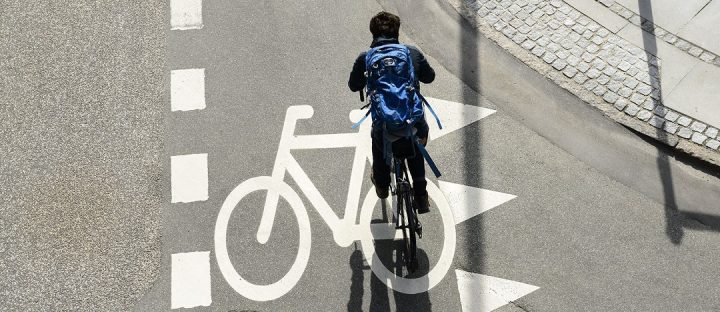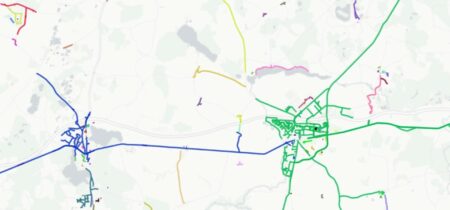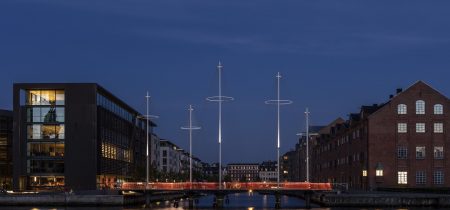Segregation and integration
A key planning factor is whether cyclists should be segregated from motor traffic or whether both road user groups should be integrated in the same area. The decisive factor is the speed and volume of motor traffic. Both elements can be regulated so space can be shared.
By Troels Andersen, Odense Municipality
Segregation or integration should be assessed on every road
The general speed limit in Denmark is 50 km/h in cities and 80 km/h outside cites. For reasons of traffic safety alone, both speed limits make it necessary to give cyclists their own designated space on larger urban streets and roads. The difference between driving speeds and cycling speeds is simply too great.
Many cyclists feel insecure on heavily trafficked roads. The sense of insecurity is often due to heavy motor traffic, high speeds and too little space, all of which are excellent reasons for establishing cycle tracks. When busses and lorries pass cyclists, the cyclist risks experiencing a suction effect that may throw him off balance.
Cycle track design and maintenance must always be of a high enough standard that the cyclist isn’t tempted to cycle in the traffic lane instead. This is rare in Denmark, but there are cases of cycle lanes where gravel and stones actually make them unfit for cycling.
Mixed traffic is acceptable on minor rural roads with very little traffic. On minor roads in urban areas segregation between cyclists and cars is often inadvisable as well as being too expensive.
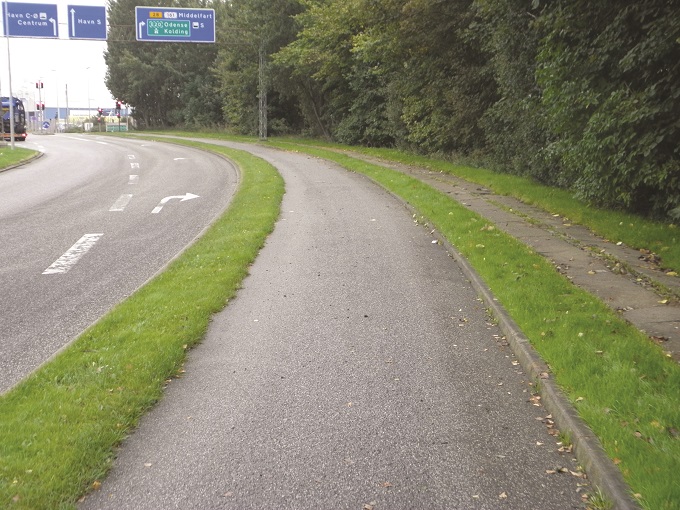
- When traffic volumes are large, it’s a good idea to further segregate cars and cyclists by a grass verge. Photo: Troels Andersen
In cities, motor traffic can be concentrated on a few main traffic arteries in the overall road network, and cycle tracks can be established along them. Roads that are not used for through traffic can be closed to motorized traffic or traffic calmed. They can thereby serve as a direct, secure cycle route with few cars.
Cyclist visibility in traffic is a necessary condition for good traffic safety. Parked cars, verges, curves in the road, planting, noise screens, etc. may result in poor range of vision or reduced visibility. Collisions between cars and cyclists occur primarily at intersections where additional steps must be taken to make cyclists visible.
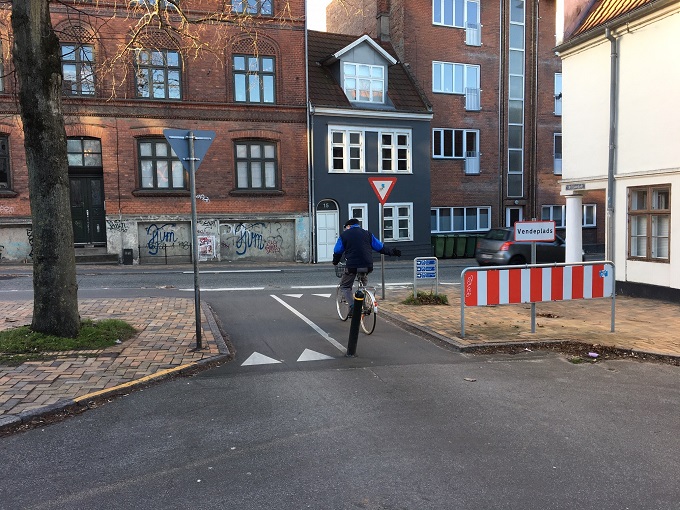
- The road closure here does not apply to cyclists, and a bollard prevents cars from entering illegally. Photo Troels Andersen
Areas between two major roads where cyclists and cars are not segregated are frequently designated as reduced speed limit zones with a lower speed limit than the general speed limit of 50 km/h in cities. An appropriate speed limit for motor traffic is 30 km/h. Unfortunately, approval is normally only granted to a speed limit of 40 m/h. The signed speed limit shows the desired speed limit, but the actual speed is the decisive factor for pedestrian injuries in case of accident, and probably cyclist injuries as well.
Accidents at 40 km/h have far greater consequences than at 30 km/h, as the human body is not built to withstand injury at speeds of over 30 km/h. Furthermore, a motor vehicle’s braking distance is much longer at 40 km/ h than and 30/h or less.
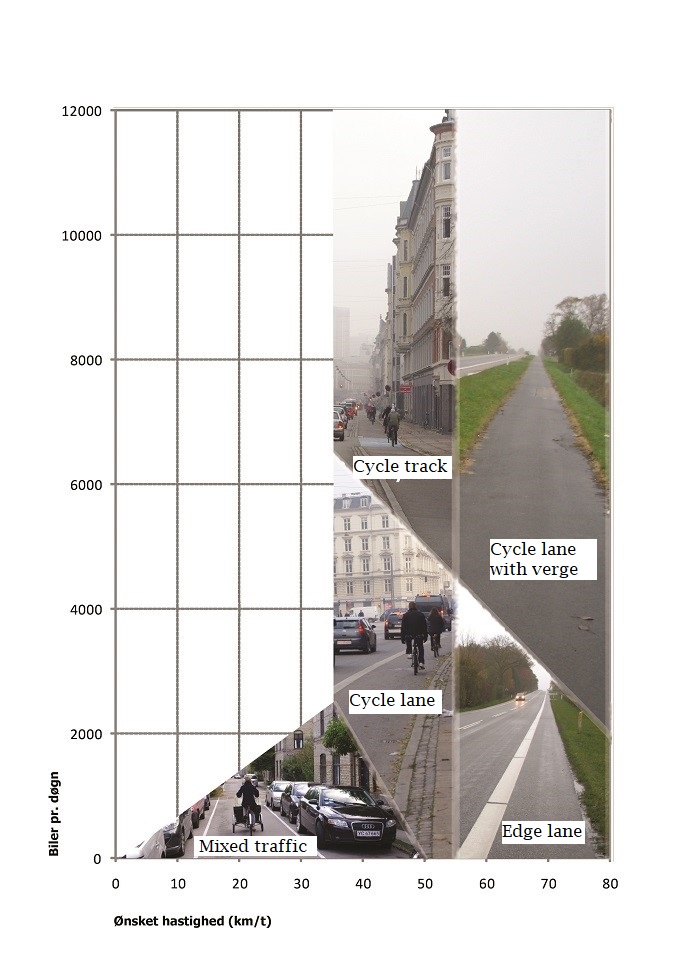
- Recommended cycling solutions in relation to motor traffic volume and speed. Vertical: Cars per day. Horizontal: Desired speed (km/h)
The figure shows recommended cycling solutions in relation to motor traffic volume and speed. Prime consideration is given to traffic safety, and segregation between cars and cyclists is increased to enhance cyclist security. Cheaper solutions are possible, of course, but that would mean a lower level of service for cyclists. A number of the studies upon which the example is based are discussed in other articles. However, in order to draw the figure it was also necessary to build on assumptions which cannot be fully substantiated by studies.
One of the figure’s shortcomings is that the number of cyclists is not included. Crossing traffic volume, all types of traffic, and the distance between crossings are also important categories.
Segregation along the road becomes less attractive the more cross traffic there is and the shorter the distance between crossings.
Sources


